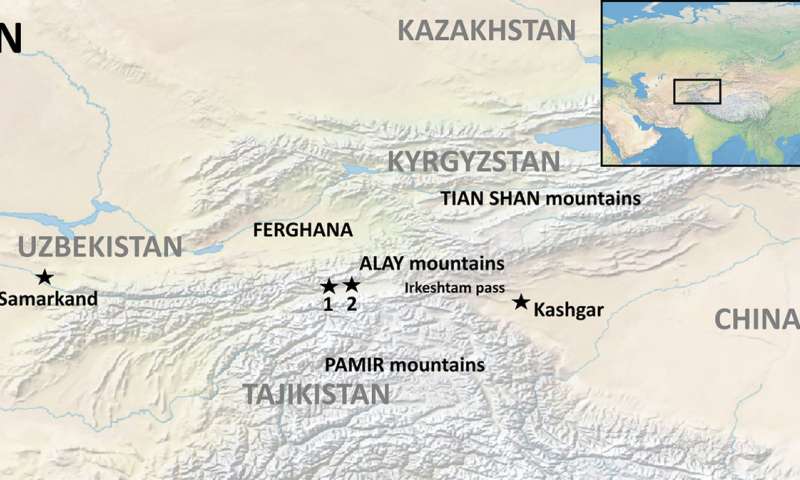At https://phys.org/print460193508.html … archaeologists have found evidence of domestic cattle, sheep, and goats, in the high mountain passes of Kyrgystan going back over 4000 years. These routes were used by merchants of the Silk Road but this new evidence predates this activity by a long shot. The findings are published by PLOS One journal and refer to pastoral herding societies of central Asia who were journeying through the region that connects directly to NW China and the oases cities of Bukhara and Samarkand. The evidence of herders is said to date from 4300 years ago. This takes us back straight to the Moe Mandelkehr 2300BC event which included movements of people over wide geographical distances.

At https://phys.org/print460194907.html … we have a study that claims to have found the route of the first humans into Australia. At the time Australia and New Guinea were a single continent with an extended continental shelf system that was dry land. However, above New Guinea there is a cluster of northern islands (in Indonesia) and it is suggested by digital analysis the Aborigines paddled from one to the other until reaching New Guinea. The new route is quite different from mainstream preferred routes – and avoids having to cross Timor.
At https://phys.org/print459765795.html … research at Aberdeen University is slowly shedding new light on the Picts and the origin of their system of symbols – thought to be an early writing system. A Pictish settlement at Rhynie, for example, where there is an excavated fort with Pictish symbols dating from late 5th to early 6th century AD. The development of the symbols is closely aligned to that of the runic symbols in Scandinavia. Bede actually claimed the Picts were recent arrivals from 'Scythia' – a term used for Scandinavia in the early Christian era. Martin Golderg of the National Museum of Scotland said, 'opur new dating work sughgests that the development of Pictish symbols was closely alighned to the broader northern of developing vernacular scripts – such as the runic system of Scandinavia and North Germany. This is intriguing as the Angles are thought to have an origin in the neck of the Danish peninsular – where it meets North Germany. Bede however does not make a connection between Angles and Picts – and in any case Picts are generally considered to be the native inhabitants of eastern Scotland (from Inverness to Fife). Bede lived in what is known as Anglian Northumbria – and it is generally thought they had not supplanted the locals but instead, ruled over them. It is feasible that eastern Scotland had also been invaded from across the North Sea – and Scandinavia is directly opposit of the region. Had a ruling dynast seized control of the Iron Age Picts as appears to be the case in Bede's own locality. This is an interesting idea as Edwin, Bede's hero and ruler of Northumbria, claimed descent from a Romano British ruling class which had presumably been taken over by the Angles (by intermarraige).
At http://archaeologyinbulgaria.com/2018/10/24/3200-year-old-cyclopean-maso… … the discovery of cyclopean masonay at a fortress in southern Bulgaria illustrates that Thrace was part and parcel of Mycenaean civilisation – or that is the speculation. Mycenae was at its height in the second half of the Late Bronze era. However, the piece begins by saying it was built between 3200 and 3000 years ago (1200 to 1000BC). This is somewhat late for the Mycenaeans as they are thought to have thrived prior to 1200BC. I suppose it depends on when you date the Trojan War – and this is far from established as a fact. Does this imply the C14 dates are once again not entirely onboard the orthodox chronology – possibly a couple of hundred years out of kilter?
